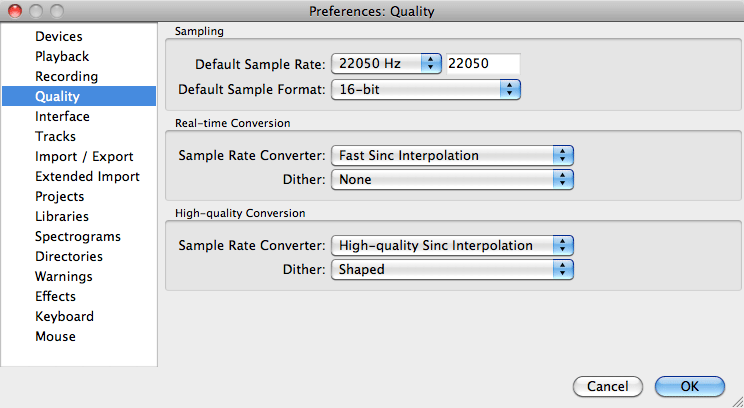Access
Access challenges and possible solutions
Whereas delivery's distribution component derives primarily from the perspective of the sender, in this case the instructor, delivery's access component derives primarily from the perspective of the receiver, the student. Porter characterizes delivery's access/accessibility component as "concerning questions about audience connectedness to Internet-based information" (p. 208).
When I first experimented with digital-audio response in 2007, it was questions about audience connectedness that most concerned me. I was confident that most of my students could play MP3 music files—indeed, doing so was then and still remains a preoccupation, even during class time. However, I was concerned that students might be unfamiliar with how to download an MP3 file sent to them as an email attachment. If they managed that, I was concerned that students might be unfamiliar with pausing a recording and replaying specific segments, functions they would have been unlikely to practice while listening to music but functions that are essential in order to effectively reflect on comments, take notes, and revise while listening.
Still (2006, p. 473) described devoting a class session to training students in how to use digital technology, including how to overcome such access challenges as downloading and listening to large audio files; he recommended that instructors likewise train their students (p. 464). Similarly, Yohon and Zimmerman (2004), describing various forms of digital response, recommended presenting students with detailed guidelines; they detailed an 11-point set of guidelines for students, some focusing on access issues (pp. 229-230).
Alas, I learn the hard way. After I introduced the experiment in class, I e-mailed my students a 14-second MP3 clip so that they could assess for themselves whether they could indeed access and play the file conveniently and efficiently enough to want to opt in to our experiment. The clip said, simply—
Hi writers. As you're listening to this, consider whether you're comfortable receiving feedback by voice rather than print. Check to see if you can pause this message, and check to see if the voice quality is decent. Bye bye.At the time, I thought this 14-second orientation would satisfactorily address potential access problems. That first semester, students were given the choice of receiving digital-audio or written response, with written response as the default, so students who encountered digital access problems could always default to the familiar paper method. About half of my students explicitly chose digital-audio response for either of the two assignments in which it was offered.
In a short anonymous survey I conducted that first semester with two classes, some students who defaulted to receiving a conventional written response in lieu of a digital-audio response pointed to access problems, such as having no home computer or slow dial-up access. However, the subsequent semester, I sought to make digital-audio response our default response method, and I had since learned from experience about other facets of the access problem. Hence, my 14-second orientation recording thus grew to more than four minutes, half of which addressed potential technical access problems: downloading large files through slow Internet dial-up access; managing email accounts with low maximum server space that could be overwhelmed with one large attachment; using common audio applications that would enable students to conveniently find and replay segments (e.g., Windows Media Player, Real Audio, QuickTime for Mac users); transferring an MP3 file to an iPod or other portable player; and using earbuds to enable listening without disrupting others, especially in campus labs (play Recording 2). To work around the first two of these access problems, one alternative delivery method I arranged was to burn my recording onto a CD and hand it directly to the student.
Recording 2: An audio file e-mailed to my students to orient them to the course's digital-audio response method.
Since these initial experiments, some of these access problems have tended to diminish, though they have by no means disappeared. For instance, cheaper alternatives to fully-equipped computers, such as smartphones, tablets, and cloud-based applications, are becoming increasingly functional; bundled communication packages including high-speed access are becoming increasingly ubiquitous; and email accounts have been allotted increasingly greater server space.
Configuring Audacity's settings
Nevertheless, some students may still encounter access problems, and problems caused by large file sizes in particular can be alleviated by optimizing Audacity's recording settings. Still (2006, pp. 468-69), who used Microsoft Word's now defunct audio commenting function, recommended settings of 22.050 kHz, 16-bit, in stereo as the optimal compromise between a high sound quality and a small file size. In brief, kHz, which stands for kilo-Hertz, is a number of the samples taken per second and the bit number is a measure of the amount of information stored with each sample. To set Audacity's settings to these levels, in the PC Windows version click on Edit -> Preferences, or in the Mac version click on Audacity -> Preferences, and then in the left-side menu of the Preferences window, click on Quality (see Figure 4). From the drop-down menu for Default Sample Rate, select "22050 Hz," and from the drop-down menu for Default Sample Format, select "16-bit." To toggle between mono (one input channel) and stereo (two), in the left-side menu of the Preferences window, click on Devices and from the drop-down menu for Channels select "2 (Stereo)." Audacity features a seemingly endless number of other settings that can be experimented with, but a novice can usually produce decent voice recordings by relying just on its default settings.
![]()

Figure 4: Preferences window, to configure the Default Sample Rate and Default Sample Format.
